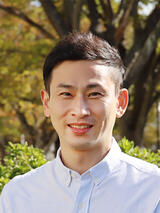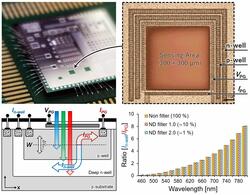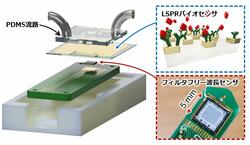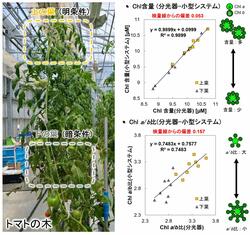
Choi, Yong-Joon
| Affiliation | Department of Electrical and Electronic Information Engineering |
|---|---|
| Concurrent post | Institute for Research on Next-generation Semiconductor and Sensing Science (IRES²) University-Community Partnership promotion center |
| Title | Associate Professor |
| Fields of Research | Semiconductor Devices, Biosensor, Optical Sensor |
| Degree | Doctor of Engineering |
| Academic Societies | The Institute of Electrical Engineers of Japan, The Japan Society of Applied Physics (JSAP) |
| choi@ee Please append ".tut.ac.jp" to the end of the address above. |
|
| Laboratory website URL | http://int.ee.tut.ac.jp/bio/ |
| Researcher information URL(researchmap) | Researcher information |
Research
In recent years, biosensing technology has overcome the detection limit of biosensors through the development and fusion of IT (Information Technology), NT (Nanotechnology), and BT (Biotechnology) has been applied to research in the medical and biochemical fields. In particular, sensing technology that detects specific pathogens and physiological analysis of the human body with high sensitivity and selectivity is attracting attention as an essential technology for the early diagnosis and treatment of diseases. Our laboratory is researching to realize biosensors with high sensitivity and selectivity using CMOS/MEMS technology using semiconductor technology at the Toyohashi University of Technology.Theme1:Filter-Free Wavelength Detection Sensor Without Optical Filters
Overview
Optical detection techniques can predict, diagnose, and analyze diseases as a compact system by detecting the optical properties of a substance, such as absorption, fluorescence, and luminescence. Hence, they are widely used as measurement and analysis equipment in various fields, such as medicine, the environment, chemicals, food, biology, and the military. In general, silicon-based photodiodes detect light in various applications, but high-performance photodetectors are required to obtain accurate and fast information. We are researching a filter-free wavelength sensor with a double-well structure for detecting fluorescence without an optical filter to solve the problem. The impurity concentration was optimized and simulated to form a double-well-structured sensor. Furthermore, we proposed a novel wavelength detection method using the current ratio based on the silicon absorption coefficient. The proposed method detected single wavelengths in the 460–800 nm range. Additionally, we confirmed that quantification was possible using the current ratio of the sensor for a relatively wide band wavelength, such as fluorescence. The proposed sensor can detect wavelengths without optical filters, which can be used in various applications in the biofield, such as POCT as a miniaturized wavelength detection sensor.
Selected publications and works
・Yong-Joon Choi et al., Encyclopedia of Sensors and Biosensors, vol.1, pp.1-19 (2023)
・Yong-Joon Choi et al., Biosensors, vol. 12, no. 11, p.1033 (2022)
・Tomoya Ide et al., Sensors and Actuators B: Chemical, vol.350, p.130896 (2022)
Keywords
Theme2:Portable LSPR virus detection system
Overview
Due to the spread of SARS-CoV-2 and the monkeypox virus, the requirement for point-of-care testing (POCT) systems that can quickly and qualitatively diagnose the pathogen's infection has increased. As a simple test method for infectious diseases, an antigen-antibody test kit using immunochromatography can quickly determine the presence of infection. However, the immunochromatography method is challenging to detect quantitative and multi-samples simultaneously. In addition, the reality is that they are being used as part of an auxiliary diagnosis because the test results are suspected to be false positives. A compact localized surface plasmon resonance (LSPR) sensor system integrated with a filter-free wavelength sensor (FFS) for quantitative virus detection methods was proposed to solve this problem. We designed and fabricated gold nanostructures optimized for virus detection. The changed transmission spectrum of the LSPR sensor by molecule was measured using an FFS as a transducer without a conventional spectrometer. We expect a compact and rapid virus detection system with qualitatively diagnose to be realized using the proposed method.
Selected publications and works
・Yong-Joon Choi et al., Appl. Phys. Express, vol.16, p.012012 (2023)
・Yuto Honda et al., Jpn. J. Appl. Phys. vol.61, p.SD1010 (2022)
・Yong-Joon Choi et al., Biosensors & Bioelectronics., vol. 172, p.112778 (2021)
Keywords
Theme3:Chlorophyll a/b measurement system for agriculture
Overview
As food consumption increases due to rapid population growth, the demand for edible crops increases. Therefore, monitoring the health status has become essential for producers to increase the yield of food crops. The chlorophyll content of leaves is an essential parameter of plants' chloroplasts, photosynthetic machinery, and metabolic indicators. Chlorophyll production mainly depends on the incident light intensity of sunlight and is a critical plant energy source. Higher plants mainly have two types of chlorophyll a (Chl a) and chlorophyll b (Chl b). Its primary role is to absorb light energy for plants in photosynthesis, converting sunlight into chemical energy. For example, in a low-light environment, the chlorophyll a/b (Chl a/b) ratio decreases because Chl a tends to be replaced by Chl b. Therefore, it is possible to estimate plants' light environment information by measuring the chlorophyll ratio. In general, there are mainly two methods for measuring chlorophyll. The chlorophyll measuring method is to measure the absorption of chlorophyll at a specific wavelength with a spectrophotometer of the leaf extracted with an organic solvent. Although Chl a and Chl b can be quantified, the destructive method for extracting chlorophyll is problematic because a long detection time of 1 day or more is required. In addition, an expensive and large-scale spectrophotometer with various optical components integrated is required to separate the wavelength of light transmitted through the extraction reagent.
We proposed a miniaturized system that can detect chlorophyll content and its a/b ratio simultaneously to measure the health condition of plants. A filter-free wavelength sensor was used to evaluate the current ratio due to wavelength changes to solve the problems of general measurement systems such as large-scale equipment and fracture measurement. Current characteristics demonstrated that due to the chlorophyll a/b ratio and changes in their concentrations, the sensor is proportional to the spectral characteristics. As a result of measuring the extracted chlorophyll of plants and leaves, the centroid wavelength value of the transmission spectrum showed linear data from the current ratio of the sensor. The proposed method enabled simultaneous measurement of the chlorophyll content and its a/b ratio of plants with a non-destructive and compact device and is expected to be applied to the agricultural field.
Selected publications and works
・Yong-Joon Choi et al., Jpn. J. Appl. Phys. vol.61, p.SD1041 (2022)
Keywords
Title of class
Analytical Electromagnetism 1
Electronic Devices
Physics 2
Experimental Project for Electrical, Electronic and Information Engineering(B12610130)




